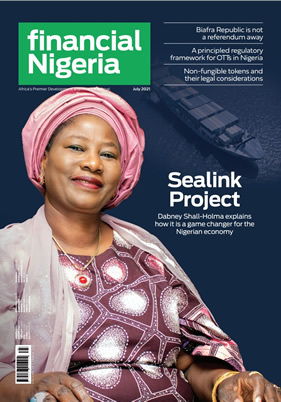Latest News
European Union supports AfDB on grid interconnection project

News Highlight
- The EU-AITF funding covers short-term studies providing advice on cross-border exchange of energy.
- The grid interconnection project includes the Uganda-Rwanda interconnection (172km at 220 kV); Kenya-Uganda interconnection (260km at 400<
The African Development Bank (AfDB) has announced that it is receiving assistance from the European Union Africa Infrastructure Trust Fund (EU-AITF) to operationalise studies and provide advice on connecting electricity grids across five Nile Equatorial Lake Countries, namely, Burundi, Democratic Republic of Congo, Kenya, Rwanda and Uganda.
AfDB is partnering with other development organisations on the Interconnection of Electric Grids Project. The aim of the project is to improve the region’s access to affordable electricity by constructing 927 kilometers of transmission lines and 17 associated substations in the five countries, which are part of the Nile Equatorial Lakes Subsidiary Action Programme (NELSAP).
NELSAP is one of two investment programmes under the Nile Basin Initiative (NBI). The other is the Eastern Nile Subsidiary Action Programme (ENSAP). NELSAP promotes investments in power development and trade; investment projects related to the common use of the Nile Basin’s water resources; among other initiatives. NELSAP member states are Tanzania, Uganda, Burundi, DR Congo, Egypt, Ethiopia, Kenya, Rwanda, South Sudan, and Sudan.
The EU-AITF funding covers short-term studies providing advice on cross-border exchange of energy as well as on the safety, security and reliability of operating integrated grids. The inaugural workshops were held from April 5-7 in Entebbe, Uganda. The workshops allowed consulting firms to present findings and hold further consultations with representatives of the benefiting countries, as well as representatives of regional power initiatives, including the Eastern African Power Pool, East Africa Community, and Electricity of the Great Lakes.
The study on “Operations and Commercialization Guidelines Development” focuses on the cross-border exchange of energy and the resulting regional electricity market. The study on “Power System Analysis” assesses current and future network behaviour of the planned interconnections and power generation plants in the region.
The grid interconnection project includes the Uganda-Rwanda interconnection (172km at 220 kV) and associated substations; Kenya-Uganda interconnection (260km at 400 kV and 220 kV) and associated substations; Burundi, DRC and Rwanda interconnection (371km at 220 kV) and associated substations; and Burundi-Rwanda Interconnection (143 km at 220kV) and associated substations. The projects are currently under construction and various components are expected to be commissioned in 2016 and 2017.
Funds for the Interconnection of Electric Grids Project have been mobilized from the AfDB, European Union, Government of Germany/KfW (German Development Bank), Japanese International Cooperation Agency, Government of the Netherlands, and Swedish International Development Agency at a total cost of $415 million, including around $50 million in counter-funding from benefiting countries.
Related News
Latest Blogs
- How Tinubu is ensuring equitable access to public services
- Nigeria’s economic reform faces new threats
- What Ould Tah’s tenure at BADEA reveals about his AfDB candidacy
- Implementation strategy crucial for the success of 12-4 education policy
- A senator’s suspension threatens the right of representation
Most Popular News
- Artificial intelligence can help to reduce youth unemployment in Africa – ...
- Nigeria records $6.83 billion balance of payments surplus in 2024
- Tariffs stir inflation fears in US but offer targeted industry gains ...
- Soaring civil unrest worries companies and insurers, says Allianz
- Rise in vaccine-preventable disease outbreaks is a threat, warn WHO, others
- IMF warns of global public debt approaching 100 percent of GDP









